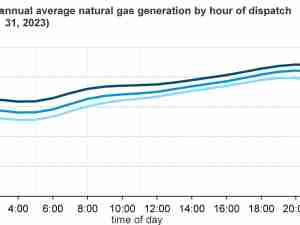Oil prices are recovering today after the trimming of recent days, as market conditions remain bullish – albeit not without risks. The resurgence of Covid-19 infections could provide downside going forward.
In addition, Nord Stream 2 is now facing certification challenges – which points to no supply relief through the pipeline this winter.
Here is Rystad Energy’s daily market comment from our Senior Oil Markets Analyst Louise Dickson:
In a tight supply environment oil prices can’t fall forever. Even though traders trimmed a few dollars last week and started Monday with caution, the short-term trajectory is still bullish for oil.
Supply will grow more to meet demand as current prices provide the perfect environment for producers to increase output, it will just not happen immediately and that’s why the remainder of 2021 is bullish.
A rebalancing of the market is expected by around mid-2022, unless OPEC+ sees reason to expedite its supply comeback, but the recent reaction of prices does not justify a change in plans..
For now there is good reason for prices to remain above $80 per barrel, but observers should not forget this is still a market and no trend continues uninterrupted. Rallies meet speed bumps and sometimes traders can just tolerate risk so much – before they reduce it.
A much looser supply market awaits in 2022, which in future will be bearish for prices, as OPEC+ tapering adds up, US shale is poised for growth, and as Iranian barrels could re-emerge as the political will behind an Iran nuclear deal remains intact.
Despite the forecasted robust return of oil supply, the bull parade than endured through 2021 will overall last into 2022, but there will be more pain points that could keep oil barrels from growing to triple-digit values that super-bullish forecasts have been suggesting until recently.
The first pivotal corner may come as early as February 2022, when lower seasonality hits demand, which we forecast could result in the first major crude supply surplus since the pandemic gripped oil markets in spring of 2020.
Oil demand has proved to be the most volatile variable in oil markets in the last year and half, and thus its risk should not be discounted. The continued positive momentum in oil consumption is inexorably linked to how well governments are able to manage the autumn Covid-19 caseload.
Since November 2020 and the announcement of successful vaccine trials by Pfizer and Moderna, oil prices have more than doubled.
If the positive trajectory of reopening continues, we expect a sustained boost in road and aviation demand to carry into 2022, but not at the grueling pace experienced in 2021, so a non-stop jump in oil prices is unlikely to be repeated.
And below is a bonus comment from our Head of Gas and Power Markets Carlos Torres Diaz on Nord Stream 2 developments:
The certification struggles that surfaced today for Nord Stream 2 are another reason to expect that the pipeline will not be starting commercial operations until about mid-2022, despite voices for more Russian gas to Europe amid the ongoing energy supply crunch that has caused gas prices to spike.
Losing the prospect of more Russian gas soon via Nord Stream 2 is a bullish development for gas traders, who are now adding premiums to European prices, removing the possibility of a supply relief from the east from the equation.
Estimating that the average time to incorporate a company in Germany is around eight weeks and as even more time is needed to rework and resubmit the documentation, the German certification process is not likely to be concluded before the second quarter of 2022 at the best case, so for sure the pipeline will not be delivering any commercial volumes into Germany before the end of the winter.
Under the current circumstances there is further downside for the timing of the start-up of Nord Stream 2, because even though Germany is more friendly towards this project than EU, the pipeline’s regulatory certification could face even more hurdles during the EU commission review stage.
On the other hand, over the last week there has been an increase in Russian gas exports to Europe through Ukraine and Poland of 5%, taking the average daily flow rate to northwestern Europe to around 3100 GWh/d.
While these additional supplies are helping the European balance, the likelihood of seeing a substantial increase in supplies before Nord Stream 2 start operations is limited.
Nord Stream 2 is the pipeline that can change the supply game in Europe and tip the scale, so delays in its utilization mean the current tight gas market conditions will persist through the winter.
The gas balance is therefore expected to remain tight, especially if temperatures in NW Europe remain below normal this winter.
As Nord Stream 2 flows will not enter the European gas market system soon, taking this supply potential out of the equation suggests Europe will continue to rely on LNG over the winter to provide flexibility, creating more buy-side competition for international cargoes.









